Physical Address
304 North Cardinal St.
Dorchester Center, MA 02124
Physical Address
304 North Cardinal St.
Dorchester Center, MA 02124

Your traps are muscles that add an instant air of dominance, power, and masculinity to your physique. And when it comes to building them, there are three key factors you need to implement in your trap workouts.
“First, it’s important to target your trap muscles from a variety of movements that include loaded carries, shrugs, Olympic lifting variations, upper back exercises, and overhead movements,” says Joel Seedman, Ph.D., strength and performance specialist and owner of Advanced Human Performance in Atlanta, Georgia.
“Second, you need to incorporate proper posture, spinal alignment, and scapular positioning on all exercises to activate your targeted muscles efficiently,” he says. “And finally, it’s critical to include the key mechanisms for inducing maximal hypertrophy, such as overload and mechanical tension, constant/continuous tension, metabolic stress, and stretch-induced micro trauma.”
Don’t worry. It sounds more traumatic than it really is.
Use the following exercises, which employ all of the aforementioned components, to build a complete trap workout.
To maximize the growth of your upper back, you’ll want each of your trap workouts to include one Olympic lift variation, deadlift variation, shrug variation, overhead movement, row, pullup or pulldown, and loaded carry.
For the best results, this type of workout should be performed twice per week with at least 3 days of rest between workouts, incorporating different movements on each of the days, Seedman says. To avoid overtraining, limit each workout to no more than 8 different exercises.
Related: 10 Best Shoulders Exercises for Beginners to Build Their Base Strength
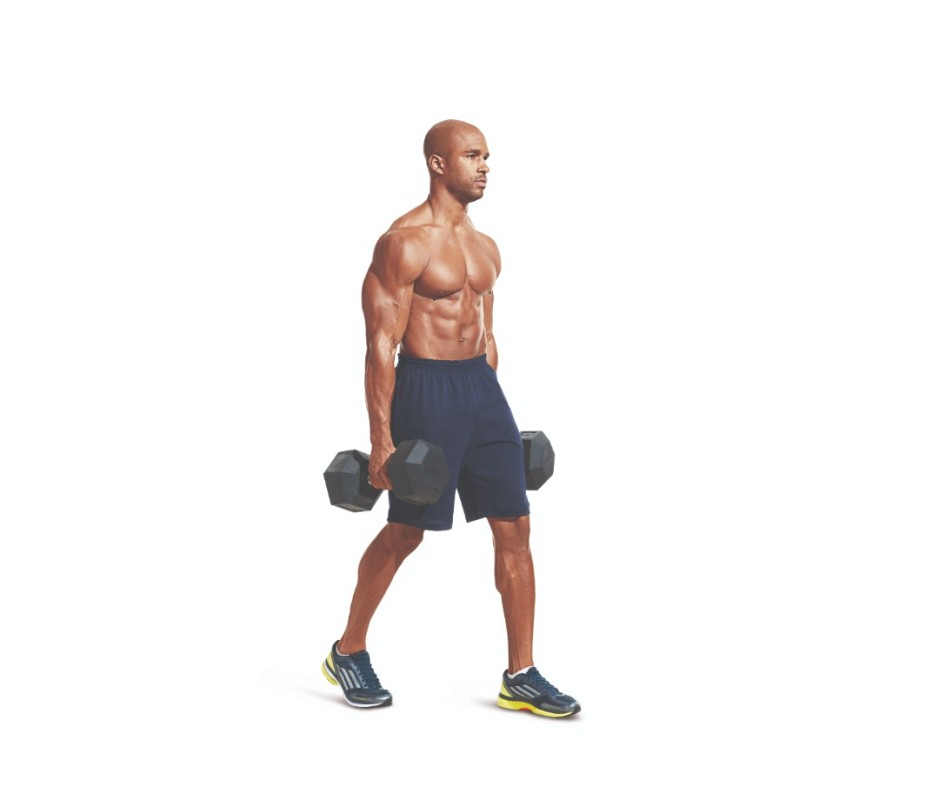
Beth Bischoff
“If you’ve ever watched the world’s strongest man events, you’ve probably noticed that every competitor has enormous traps,” Seedman says. That’s because of the sheer number of farmer’s walks and loaded carries they perform. “Besides being a highly functional movement, the farmer’s walk is one of, if not the single most potent mass builders for the traps, upper back, shoulders, and neck,” he adds. It’s actually an excellent exercise for strengthening the muscles along your spine, safeguarding against injury, or strengthening your back after a pre-existing one. The move is simple (and safe!) but incredibly taxing. Luckily, the tremendous growth is worth it.
“Keep a tall posture, avoiding any forward shoulder rounding, and maintain a tight, rigid core throughout,” Seedman says. “Besides sending your heart rate through the roof, don’t be surprised if you experience an incredible burn throughout your entire traps, shoulders, and upper back,” he adds.
Complete 2-3 rounds of 50-100 yard walks, taking 2-3 minutes of rest between sets.
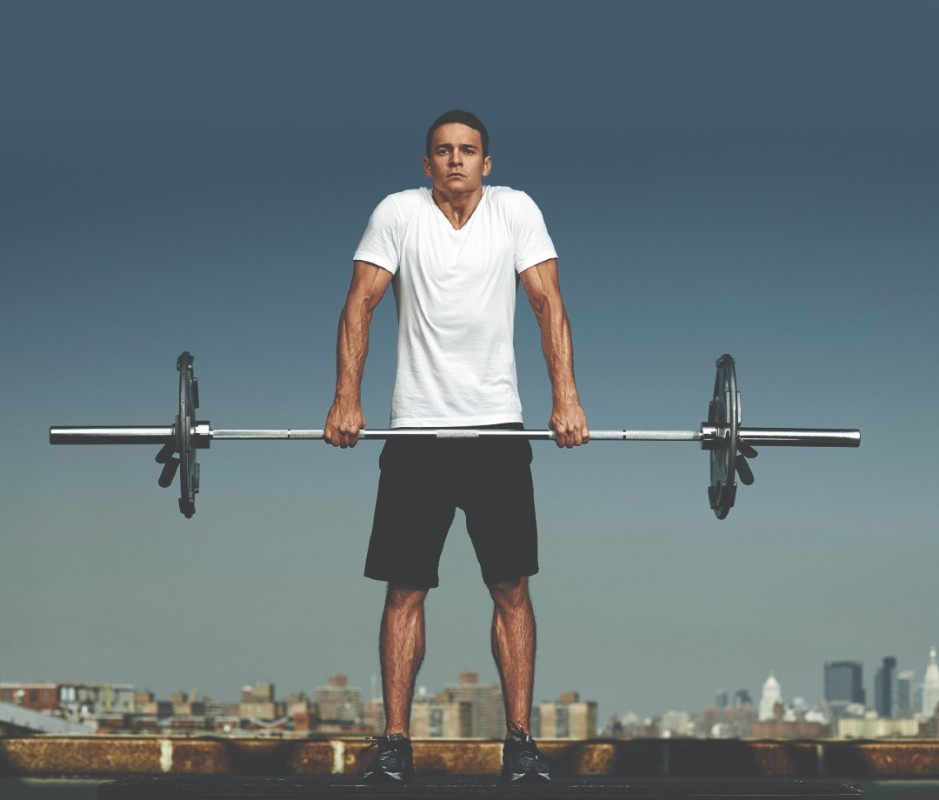
James Michelfelder & Therese Sommerseth
“Barbell shrugs are undoubtedly the single most common trap exercise you’ll see performed in the gym,” Seedman says. The problem is most guys have terrible form. Instead of stimulating growth in your traps, you’ll create postural deficiencies, meaning you can mess with your spinal alignment. Technique and mechanics are crucial to creating the most tension and metabolic stress throughout your traps—both of which are needed to induce muscle hypertrophy/growth.
Load up a barbell with the heaviest load you can handle. Focus on staying tall and maintaining an upright posture while you hold the barbell with an overhand grip and shrug your shoulders straight up and down, not forward or back. At the top of the shrug, when you’re in the contracted position, pause for several seconds. Don’t let your shoulders round over or your head protrude forward; your head should remain rigid throughout the entire exercise.
Really focus on the pause at the top of the shrug. It will help stop any momentum from breaking your good posture.
Aim for the heaviest load you can handle for 2-3 sets of 10-12 controlled reps, taking 1-2 minutes of rest between sets.
Related: Want Better Lifts? Work on Your Shoulder Mobility
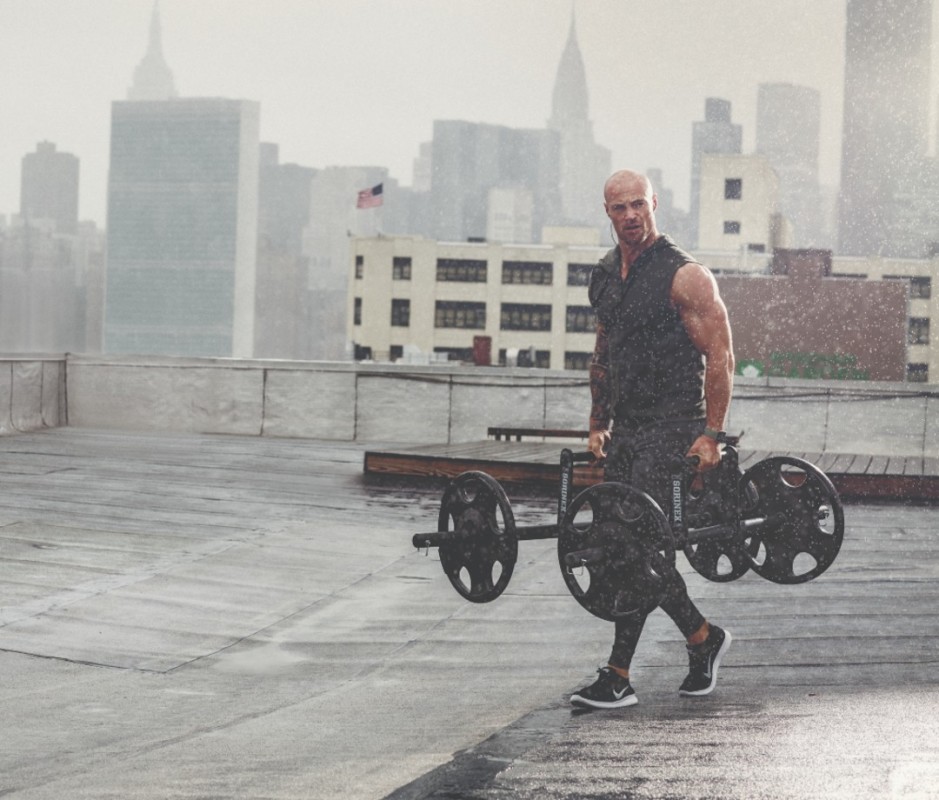
Andrew Cutraro
“Most gyms don’t have dumbbells and kettlebells that go past 100lbs, making it difficult to progress the move as you get stronger,” Seedman says. “With this in mind, if you’re looking to truly overload your traps with unlimited potential for ever-increasing loads, the barbell farmer’s walk is fantastic exercise.” You can load up a near-limitless amount of weight, and you’re really challenging your core, upper back, traps, and shoulder stabilizers since the instability of the shifting weight forces you to balance and control the load.
Because of the instability, you’ll naturally be forced to walk in a slower, more controlled fashion anyway, but take your time.
Prescription
2-3 sets with 2-4 minutes of rest between sets; any more will leave you utterly exhausted.
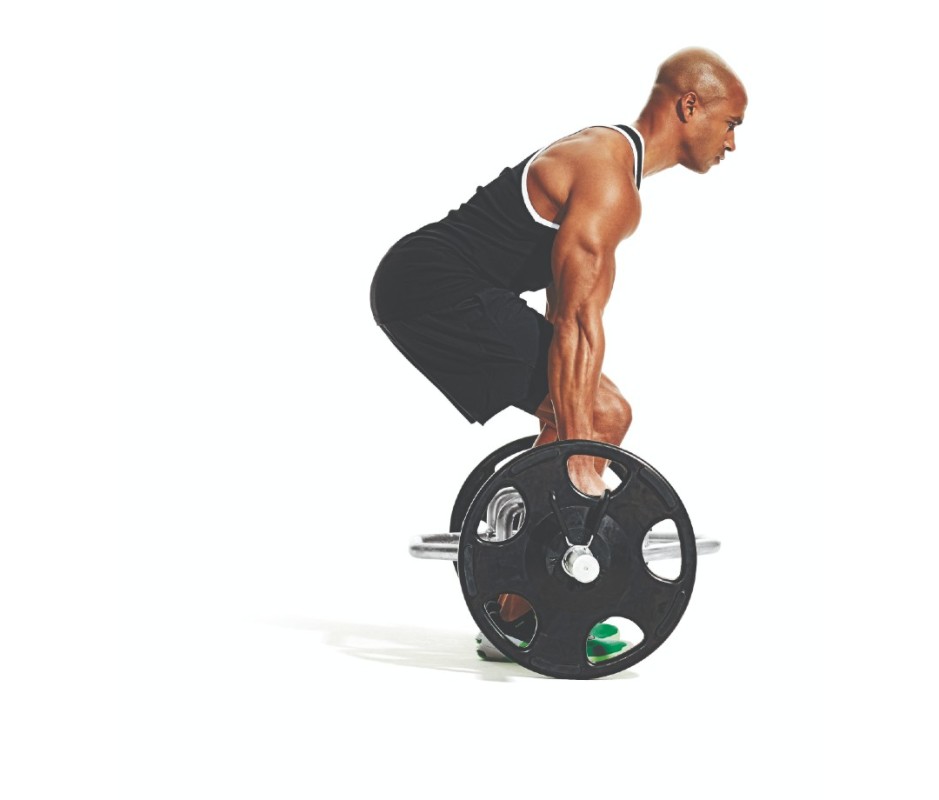
James Michelfelder
“If you’re looking for an all-in-one move that crushes your entire body while inducing hypertrophy in your traps and upper back, the hex bar deadlift is it,” Seedman says. It’s also safer than a typical deadlift. Rather than having the barbell loaded in front of your body, which puts you at a greater risk of hurting your lower back and spine, the hex bar fits around your body, placing the load on the sides of your torso. Better yet, this lets you lift heavier loads, complete broader rep ranges, and create high levels of tension and stretch throughout your upper back and traps.
When you lock your hips, be careful not to lean backward and hyperextend your lower back. Also, make sure your back is flat as you bend your hips back and lower the bar, dropping it if necessary.
Work up to heavy loads incorporating 2-3 sets of 3-6 reps before finishing with 1-2 sets of 8-12 reps, taking longer rest periods of 3-5 minutes to maximize the overload effect. “Using this variety of rep ranges helps elicit even greater hypertrophy gains as all available fibers, including the fast twitch and slow twitch muscles, will be thoroughly taxed.
Related: 14 Best Lat Exercises to Widen and Strengthen Your Back
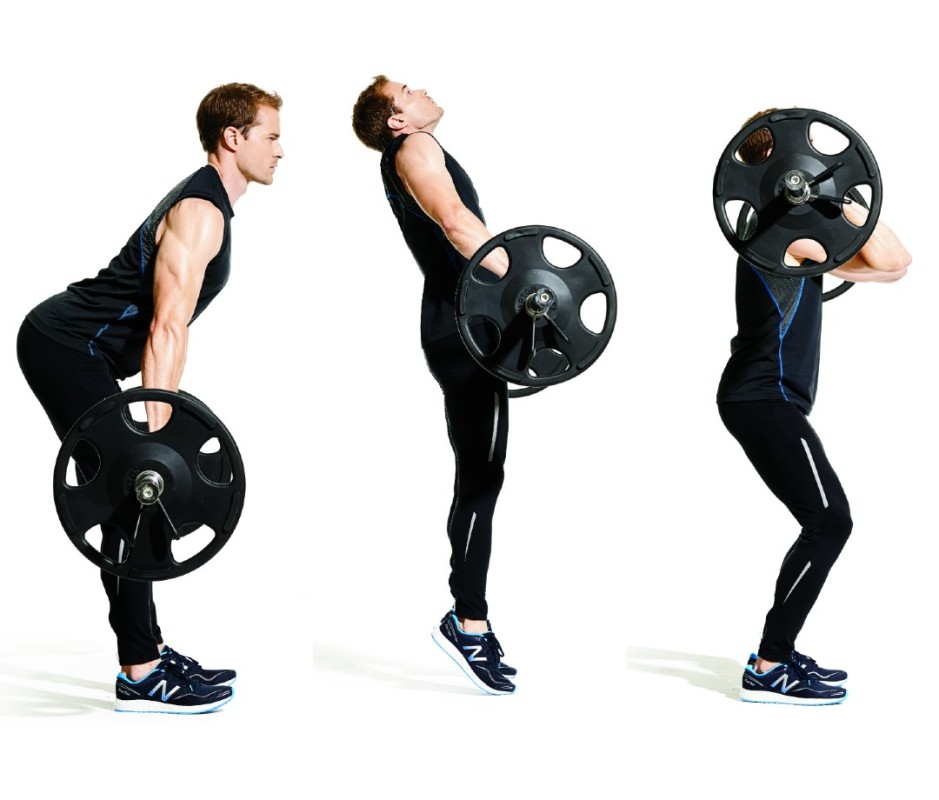
James Michelfelder
“Olympic lifters are notorious not only for their ability to produce an extremely high power output but also for having incredibly developed upper back and trapezius muscles, Seedman says. “Majority of this can be attributed to the actual Olympic lifts they perform because they elicit growth and strength gains.” The hang clean and hang snatch variations are slightly more user-friendly variations of Olympic lifts since they’re performed from a partial deadlift position—just above your knees—rather than from the floor.
“Although both the clean and snatch are great trap builders, the hang snatch places even greater strain on your traps since the load is caught in the overhead position,” Seedman says.
Repeat for 3-5 sets of 2-5 reps. Be sure to use longer rest periods of 2-3 minutes since these moves require high power output and fast-twitch muscle fiber activation.
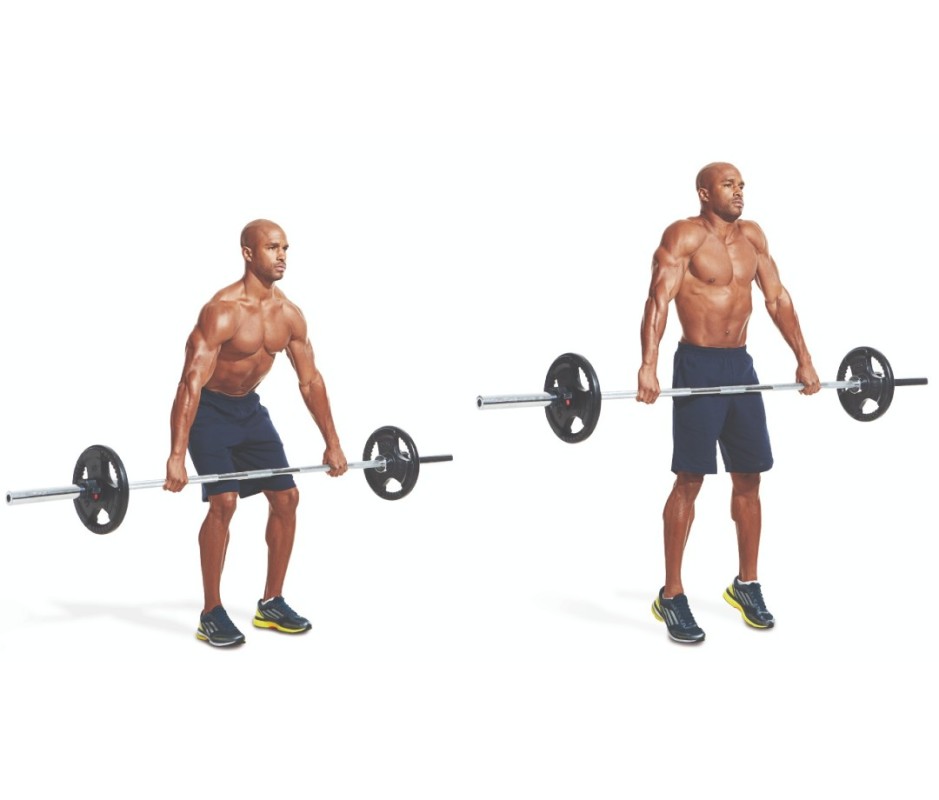
Beth Bischoff
“The power shrug is an explosive exercise that involves powerful hip drive followed immediately by an aggressive shrug at the top of the movement,” Seedman says. “This move is exceptional for targeting the fast-twitch fibers of your upper back and traps since the high power output forces you to activate so many of them.”
The main difference between the hang versions of Olympic lifts and the power shrug is the bar stays below your waist, and your arms never bend, Seedman explains.
3-5 sets of 2-5 reps with 2-3 minutes rest between sets.
Related: 10 Exercises to Make the Best Upper-Body Workout of All Time
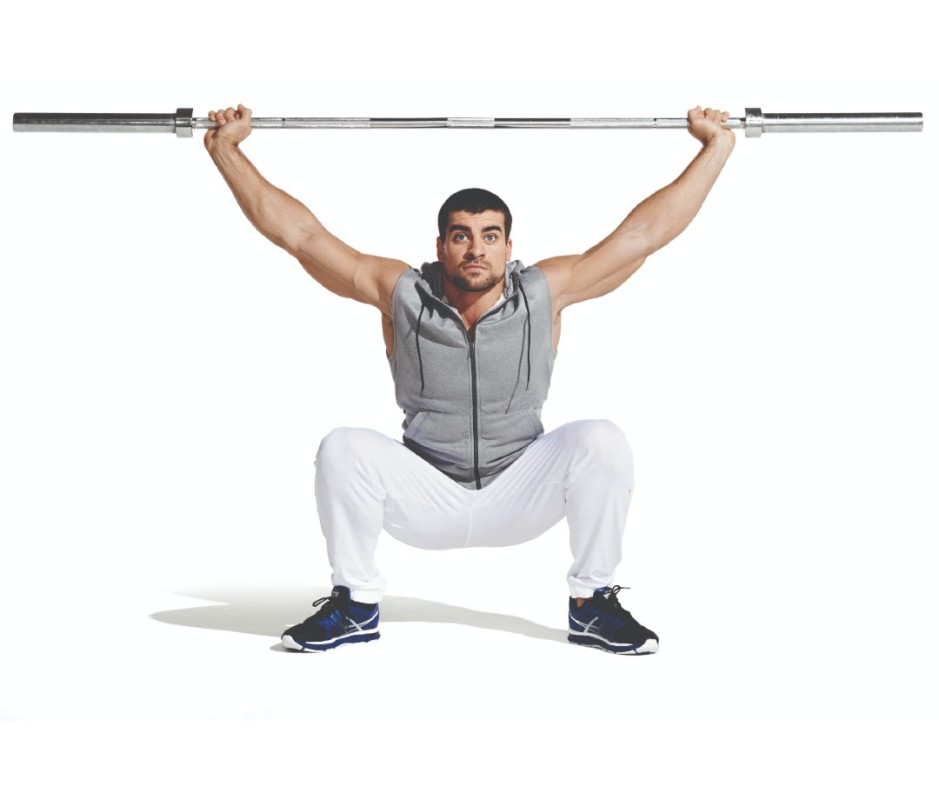
James Michelfelder & Therese Sommerseth
You probably think of squats as a leg-dominant exercise, but the overhead squat is an exception. The amount of tension this variation places on your whole upper back, traps, and shoulders makes it extremely upper body-intensive. “Besides requiring greater motor control and muscle activation, this technique will accrue greater total time under tension for your upper back and shoulders, which can be highly effective for increasing size and strength gains in your traps,” Seedman says.
Using a very wide grip, hold the bar overhead and slightly behind your head, then squat down until your thighs are about parallel to the floor. As you squat, simultaneously focus on pressing against the barbell to push you into the position and pushing the bar slightly back. This will help you maintain balance, Seedman says.
If you have a hard time reaching the desired position, you need to address mobility and stability issues throughout your body. “And if you are capable of successfully performing these, don’t be surprised if your traps are screaming after just a few repetitions,” Seedman says. Once you progress and you’re looking to ramp up the intensity, try performing these in an eccentric isometric fashion by squatting down slowly and then pausing for several seconds in the bottom position, he adds.
2-3 sets of 3-6 reps with 2-3 minutes rest in between sets.
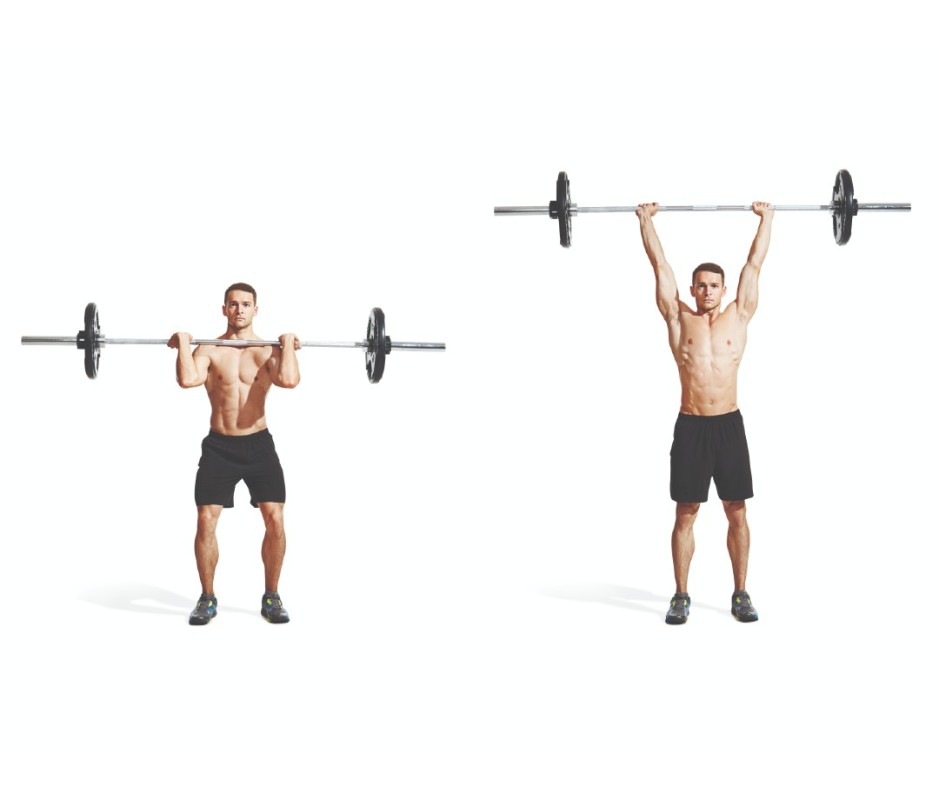
Beth Bischoff
“The barbell push press is one of the single most effective strength and mass builders for the entire upper body,” Seedman says. “It also does wonders for crushing your traps—particularly at the top of the movement as you drive the weight overhead.”
Emphasize the pause at the top of the motion. This will create the most tension throughout your traps and upper back since you’ll have to fight to stabilize the heavy load overhead.
Because there’s a lot of skill and coordination involved, a higher total number of sets (4-7 sets) with fewer reps per set (1-5) is ideal for maximizing your power output. And since this is one of the more physically demanding exercises you’ll do, be sure to take 2-5 minutes of rest between sets.
Related: These 10 Compound Exercises Save Time in the Gym Without Sacrificing Gains
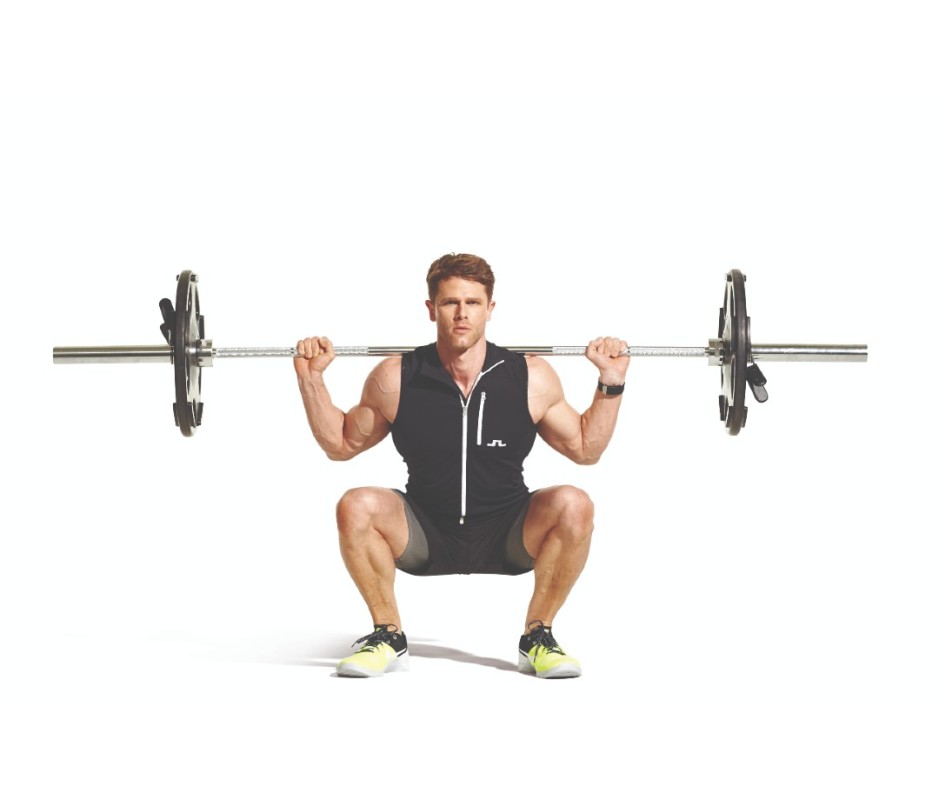
James Michelfelder
Besides maximizing recruitment of your upper back and traps, this squeeze and pull technique helps to create more tension and spinal rigidity, which lets you lift heavier loads more safely, Seedman explains. “Although barbell squats are an obvious lower-body dominant movement, most trainees are unaware heavy barbell squats are a highly effective trap builder,” Seedman adds. Your traps and upper back are forced to hold a very intense isometric contraction to keep the bar racked on your upper back and shoulders instead of resting on your spine.
Rather than tilting your head up, which can cause hyperextension and neck impingements, keep your head neutral and your shoulder blades pulled down, he adds.
A combination of heavy weight and higher volume using 4-5 sets of 3-8 reps and finishing with a high rep set of 10-15 reps will do wonders not only for your legs but for the musculature of your neck, traps, upper back, and shoulders. Take 3-5 minutes rest for the heavier sets and 1-2 minutes rest for the higher rep sets.
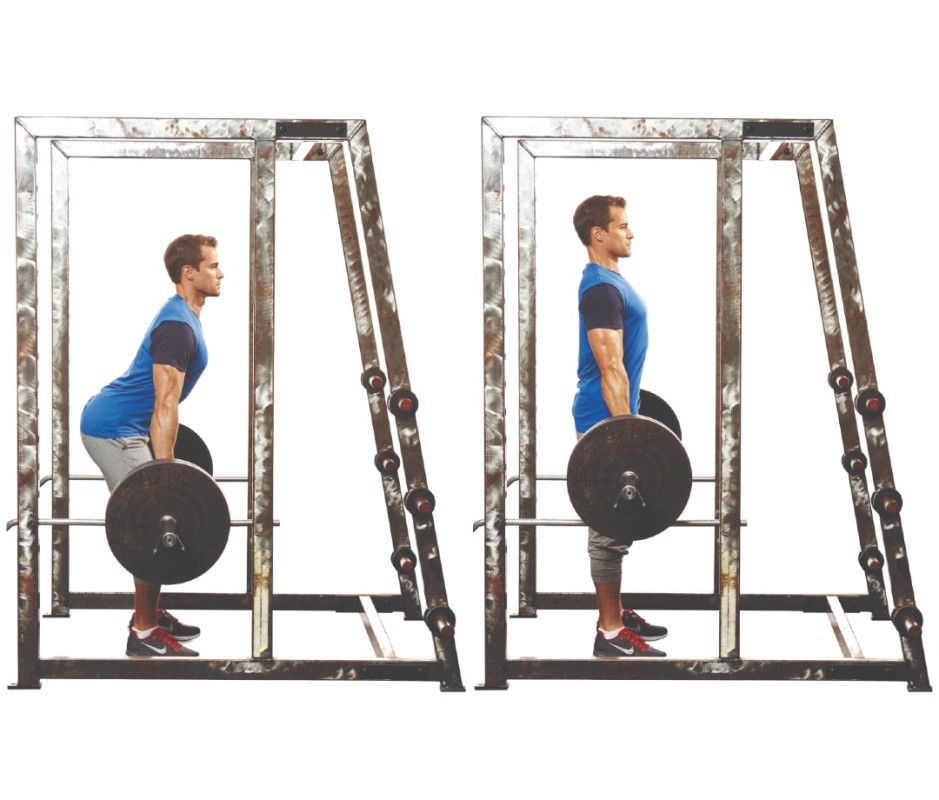
James Michelfelder & Therese Sommerseth
Although the movement is produced through your hips, your upper back has to stay tense to support the heavy load. This combination of tension and stretch makes the rack pull a great exercise to stimulate muscle growth in your traps.
“You want to actually feel the load pulling and creating micro-trauma throughout the entire musculature of your upper back and traps,” Seedman says.
Perform several sets (3-4) of lower reps (2-6) with a heavier load, then finish with a higher rep set of 10-12 reps with a substantially lighter load. Take 3-5 minutes rest for heavier sets and 2 minutes rest for lighter sets.
Related: Dust Off Your Deadlift: 3 Variations to Take to the Gym Tonight
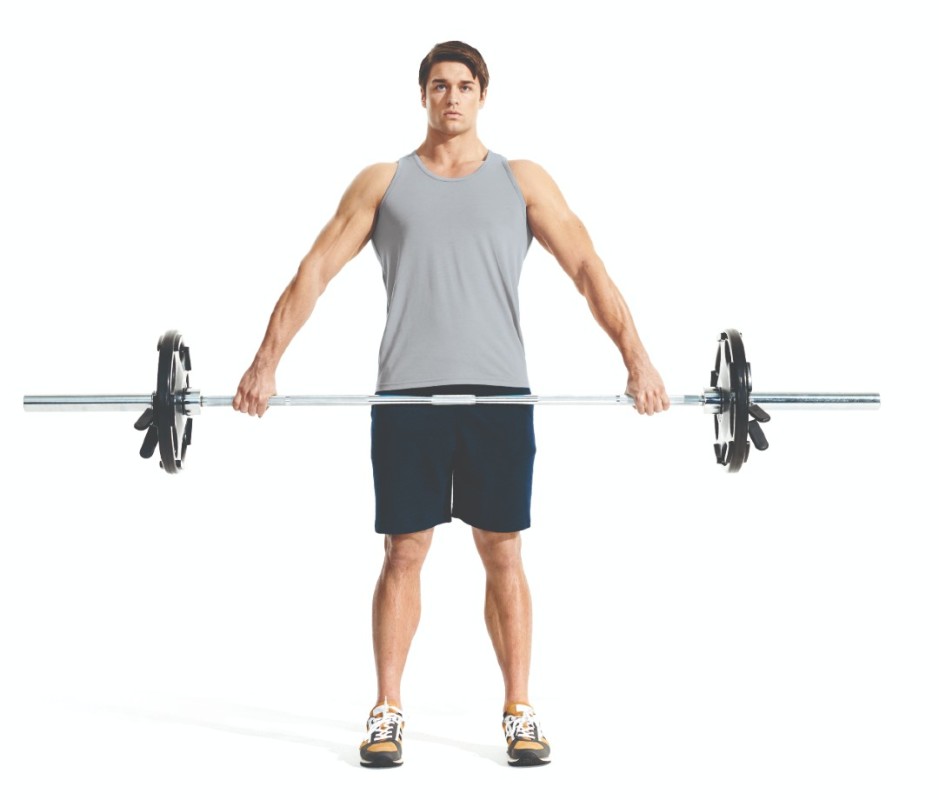
James Michelfelder & Therese Sommerseth
“This wider hand placement not only creates more tension on the upper back and traps, but it also creates a larger range of motion as you’re forced to achieve a deeper starting position in order to lift the load,” Seedman says. You’ll stimulate strength and size throughout your entire body, as well as muscularity and hypertrophy in the trapezius muscles, which few exercises can match, he adds.
As with all deadlifts, you want to avoid rounding your back and flexing your spine.
3-5 sets of 3-8 reps with 2-4 minutes rest between sets.
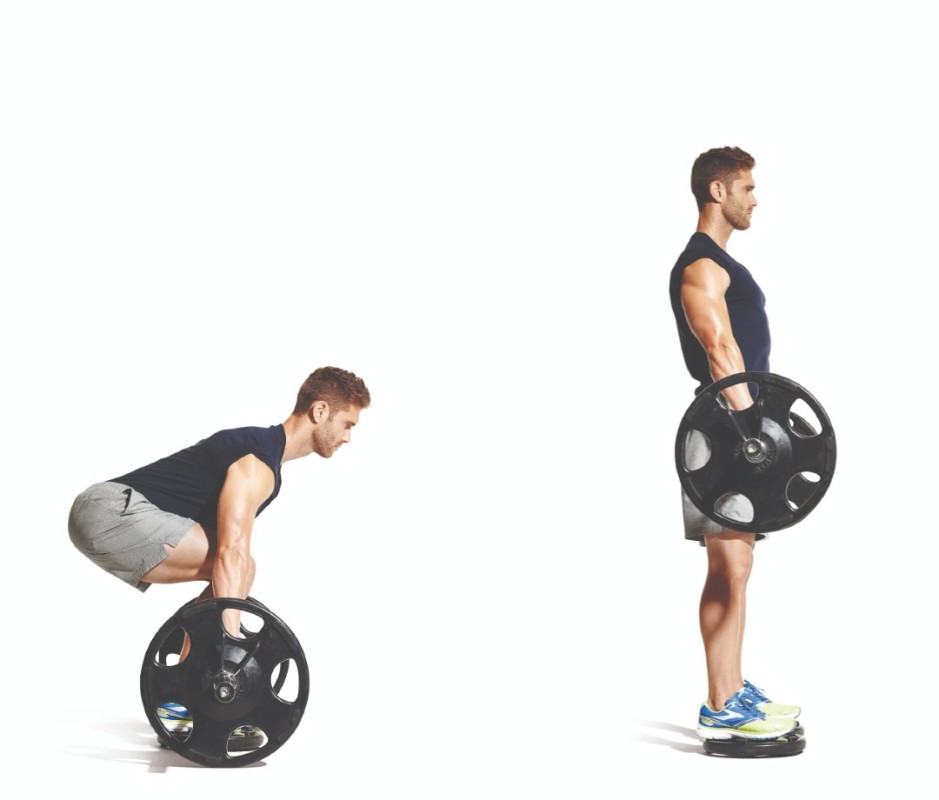
James Michelfelder
“Combining deficit deadlifts with eccentric isometrics (slow negatives with a pause in the stretched position) is a unique but highly effective technique for producing muscle mass throughout the entire body, but especially the traps and upper back,” Seedman says. “Because the weight is held continuously in your hands and never on the floor, the constant tension and loaded stretching make this eccentric variation a must for upper back and trap growth.”
You want to produce constant and continuous levels of high-intensity tension as you reach the various positions, Seedman explains. The angle of your torso will gradually change from the bottom to the top phases, which will create three-dimensional trap muscles. “The bottom position will engage your lower and middle traps more forcefully while the top position will crush your upper traps,” Seedman explains. To make these more user-friendly on your lower back and spine, assume a squat stance and use a deadlift technique.
Complete 3 sets of 4-6 repetitions with 2-3 minutes rest between sets.
Related: The Ultimate Training Plan to Double Your Max Pullups
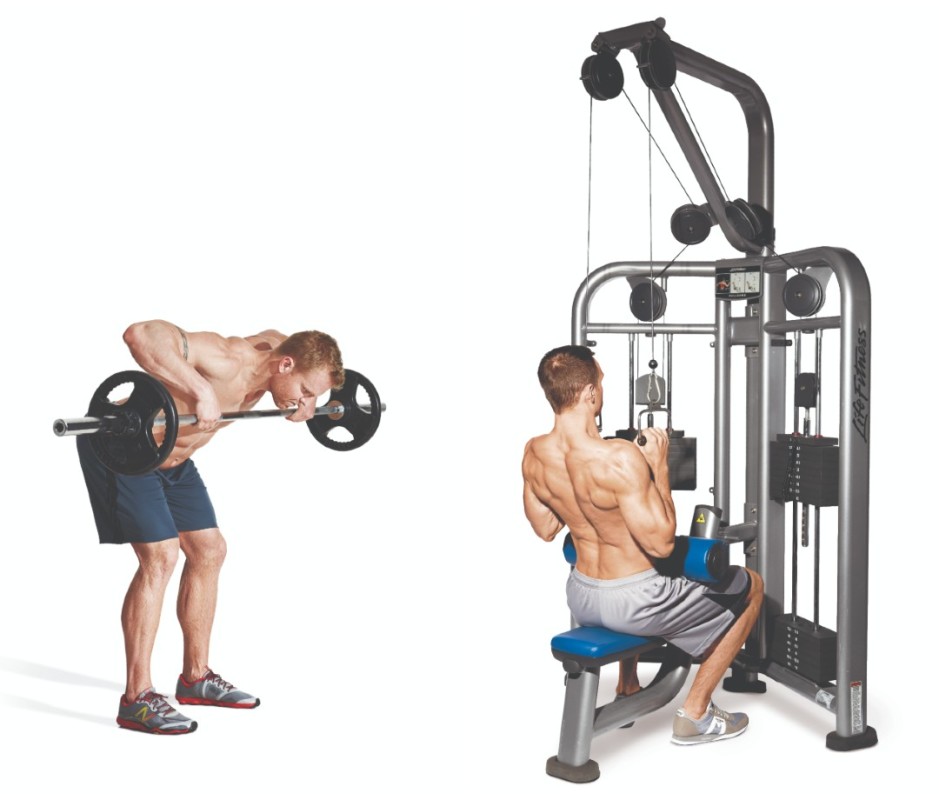
Beth Bischoff
“Rows, pullups, and pulldowns are typically considered variations of lat-dominant movements, which isn’t wrong, but the lower and middle traps also play a pivotal role in any upper body pulling movement. Because many lifters are upper-trap dominant—as a result of performing an excessive amount of upper-trap movements or from faulty form—horizontal and vertical pulling motions are essential for addressing this imbalance,” Seedman says. These moves will efficiently target your lower and upper trap muscles.
For all of these, incorporate a pause in both the stretched and contracted positions. You want to squeeze and engage all the muscles of your upper back, lats, and traps, as well as maintain proper form. Make sure you always have retracted and depressed shoulder blades and lower spinal extension in the contracted positions of all upper-body pulling motions. Without these mechanics, you’ll fail to target the often-neglected lower and middle trap muscles and strain your anterior shoulders and upper traps.
A large variety of sets and rep ranges can tax your fast- intermediate- and slow-twitch fibers, Seedman says. A good starting point is 3-4 sets of 6-10 reps with 2-3 minutes rest between sets.
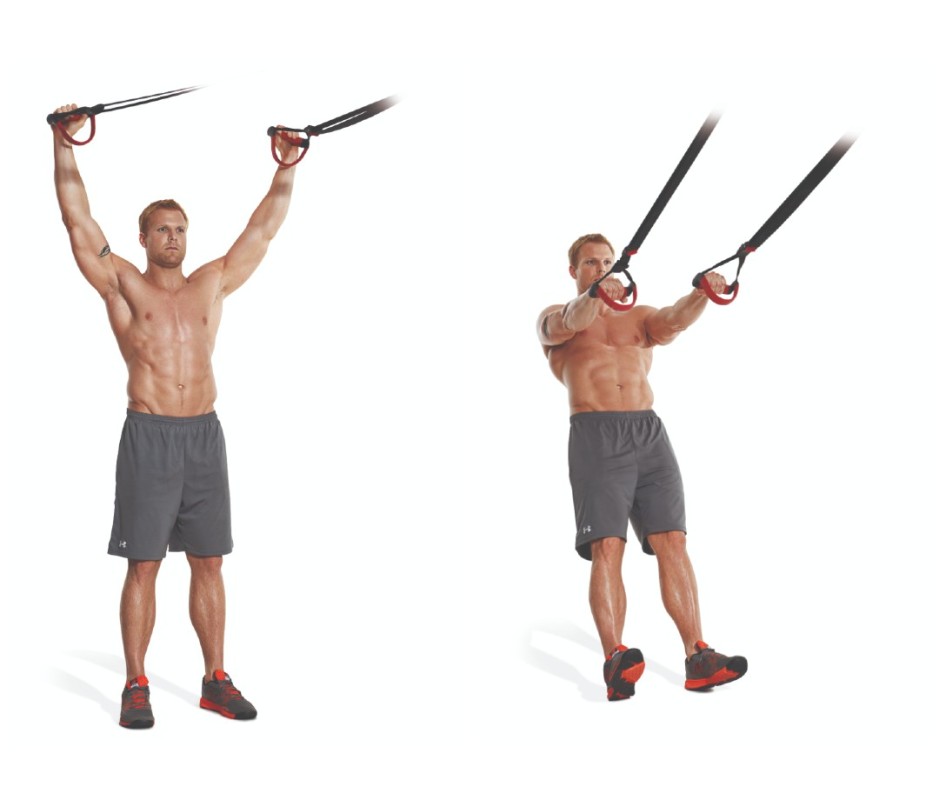
Beth Bischoff
“Due to the nature of the muscles, most trap exercises involve some form of heavy barbell or dumbbell loading,” Seedman says. “But this effective variation targets the lower, middle, and upper traps as well as the shoulders without any external loading (other than your body weight).” You’ll challenge your muscles through a large range of motion while engaging stability, balance, and motor control from head to toe.
Keep your elbows straight and move only at the shoulder joint. Your core and spine should remain rigid as you feel your traps, shoulders, and upper back continuously engaged throughout the movement.
Perform 2-3 sets of 10-12 with 45-60 seconds rest between sets.
Related: Not Getting Bigger? Try These Brutal Bodyweight Supersets
Ending your workout with a giant strip set of strict barbell shrugs will really amp up the hypertrophy stimulus of your trap workout,” Seedman says. “The burn will be almost unbearable, but if you’re able to handle it, the growth in your traps will far outweigh any level of discomfort.”
Pay special attention to your form; don’t move your shoulders forward or back as you shrug.
Start with the heaviest weight you can shrug for 6-8 perfect reps—for example, 405lbs. Once you’ve completed your target reps, strip a plate off each side and crank out as many reps as possible with 315lbs. Perform the same protocol with 2 plates on each side for 225lbs. Keep this going until you’ve stripped all but one plate off the bar, blasting out as many reps as you can with 135lb. Because of the devastatingly high intensity, Seedman says one set of this will more than suffice. Don’t take any rest between each strip phase.
Trapezius muscles, or trap muscles for short, are a large, paired muscle group that help stabilize the shoulder blades during arm movements and control shoulder girdle movement and positioning. These functions make the traps an important muscle group for maintaining good posture. The traps expand from the base of your skull (at the occipital bone) down to the lower part of your upper back (thoracic vertebrae) and as wide as your shoulder blades. It has two sides, the right and left, that create a trapezoid shape.
Traps have upper, middle, and lower parts that have separate functions. The upper traps help with scapulae (shoulder blade) elevation and upward rotation and extension, lateral flexion, and contralateral rotation of the head and neck. The mid traps assist scapular retraction—pulling your shoulder blades together, and the lower traps assist with lowering and upwardly rotating your scapulae.